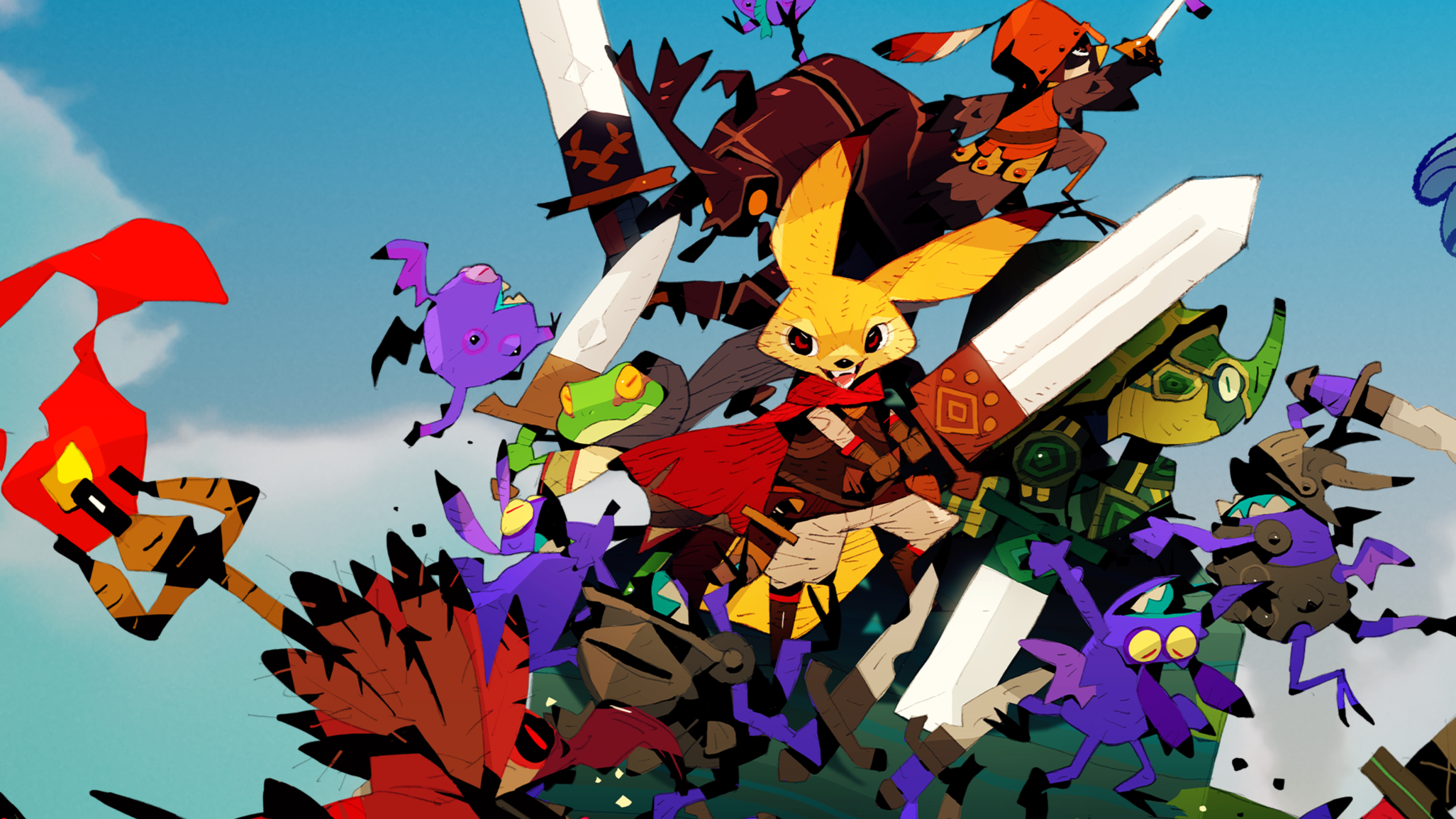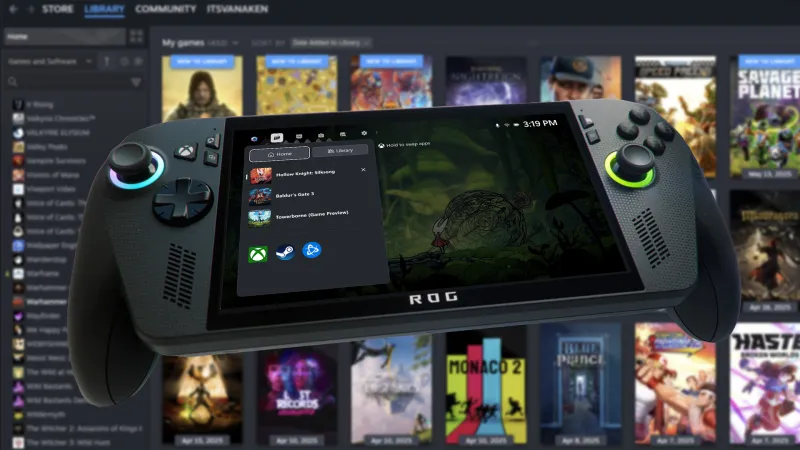
A satisfying, imperfect new step forward for LEGO games.
What it is? A LEGO original game where you actually build with LEGO.
Expect to pay $30/£25
Developer ClockStone Studio
Publisher Thunderful Games
Reviewed on AMD Aerith 0405 2.8 GHz; AMD Van Gogh 0405 GPU, 16GB RAM (Steam Deck 256GB)
Multiplayer? No
Link Official site
I have a confession: I’m not very good at building with LEGO. This is a revelation as much as it is an admission, something I really only figured out while playing ClockStone Studio’s LEGO: Bricktales over the weekend. It’s one thing to place random LEGO in an aesthetically pleasing way; it’s another thing entirely to, as Bricktales bids its players to do, construct architecturally-stable structures out of nothing but some bricks and some basic guidelines—no instructions, vibes only.
The game starts off simple enough. You are a young builder who has been summoned to an abandoned theme park by your wacky inventor grandfather, known simply as Grandpa. Grandpa has built a portal that can take people to other locations, but first, you have to help him restore power to his basement lab after an accident fried all the systems. This is the tutorial stage, and nothing is meant to be that hard here. You make a simple bridge, reconnect some pipes, flip a switch and eventually get back to Grandpa in one piece.
(Image credit: Thunderful Publishing)
From there, you’re tasked with collecting five “happiness crystals” to help Grandpa renovate the abandoned park before the nearby mayor comes to evict him. You can find these crystals in each of the five stages you travel to in the course of the campaign, and the general flow is the same throughout: arrive in a new place, figure out what’s making people in the area unhappy, solve that problem by building things out of LEGO, collect the happiness crystal, return to your grandpa and build some theme park rides. Lather, rinse and repeat.
The nice part about going through each stage is that you notice little hidden items, like collectible animals or treasure chests, that you can’t get yet unless you unlock a special power. Once you’ve collected all the powers, however, you’re free to return to any stage you want and essentially roam freely. This liberated sense of movement is rewarded by finally unlocking the hidden areas, getting all the collectibles, and eventually buying all the stuff at each level’s cosmetics store. Doing so grants you new clothes for your builder, and new cosmetic bricks to use on your successful puzzle builds later.
Builder’s paradise?
ClockStone Studio, Bricktales’ developer, is best known for their Bridge Constructor series, and they bring the general vibe of that prior series into their work here. When you enter a puzzle, you are given all of your available parts, an area to build them in with upper and lower bounds, and a few instructions, like “build the bridge so that 1) nothing breaks and 2) the test robots can cross it.” You’re then free to build whatever you want that meets those conditions.
(Image credit: Thunderful Publishing)
Sometimes, you have to subject your build to a pretty brutal physics battery, like watching a perch for some parrots swing wildly around in an attempt to keep balanced, or a one-ton weight drop directly on the one place you forgot to fortify. Other times, the only instruction, “build a perfect pyramid,” has you pulling your hair out as you try and fail repeatedly to do what it says, with no hint system to help you.
Seeing my messy work succeed became an antidote to my frustration.
Like I said at the beginning, I found out this weekend that I’m not very good at building with LEGO. I’m not skilled at engineering or architecture and found these puzzles exceptionally difficult, to the degree that I had to take regular breaks to keep myself from getting too frustrated. However, in overcoming these puzzles—which, to LEGO aficionados might seem too easy—I discovered that I appreciated the creative potential of LEGO that much more.
My builds were often janky and unrefined, but they were physically sound and they met the requirements—good enough for government work, as the old saying goes. On the especially difficult builds, like spiral staircases or multi-level bridges, I always breathed a major sigh of relief when the test robots made it to their destination without everything breaking. Seeing my messy work succeed became an antidote to my frustration.
(Image credit: Thunderful Publishing)
That being said, LEGO: Bricktales doesn’t always hit in such a satisfying way. The humor, which is built around puns and LEGO jokes, doesn’t always land. When you’re not just directly building your way out of a problem, the game’s mission structure turns toward fetch quests that sometimes feel less organic and more artificially drawn out. The world-building sometimes feels lazy and too heavily reliant on the puns to string the narrative together. And I think the building puzzles themselves tend to skew too heavily towards a freeform, do-what-you-want model of LEGO building that might turn off some of this game’s intended demographic.
However, this game is perfect if you’re looking for low-effort chuckles and pretty gorgeous LEGO-built environments surrounding an almost Besiege-like level of construction and physics simulation. It feels like a tentative next step forward from the narrative-driven art game Light Brick Studios, LEGO’s internal game developer, put out a few years ago in LEGO: Builder’s Journey. With time and some refinement, we could see the release of a genuinely great original LEGO game.
As it stands, I had a good—though not great—time with LEGO: Bricktales. The frustration I felt at the difficulty and obtuseness of some of the puzzles was narrowly outpaced by the satisfaction I felt in finally solving them. The writing wasn’t the strongest I’ve seen in a game this year, but the game’s overall quick pace meant that nothing ever truly overstayed its welcome, even the longer fetch quest chains. It might take a minute for the game to get there, but I think all of its elements come together to help LEGO: Bricktales eventually stand triumphantly on its own two janky, shaky legs.






